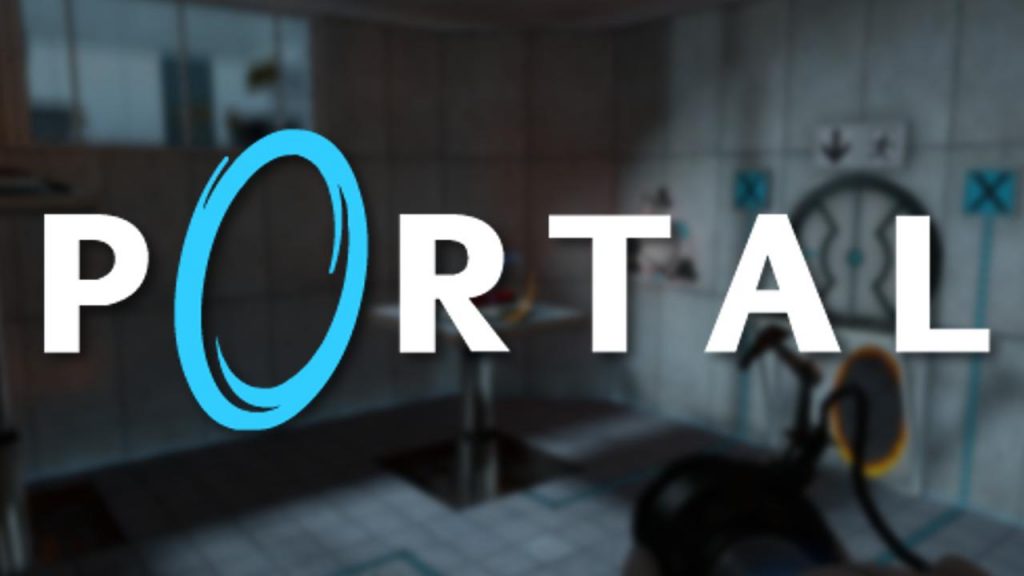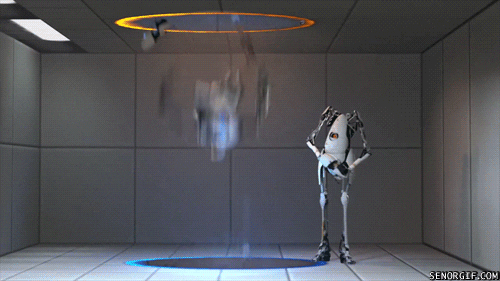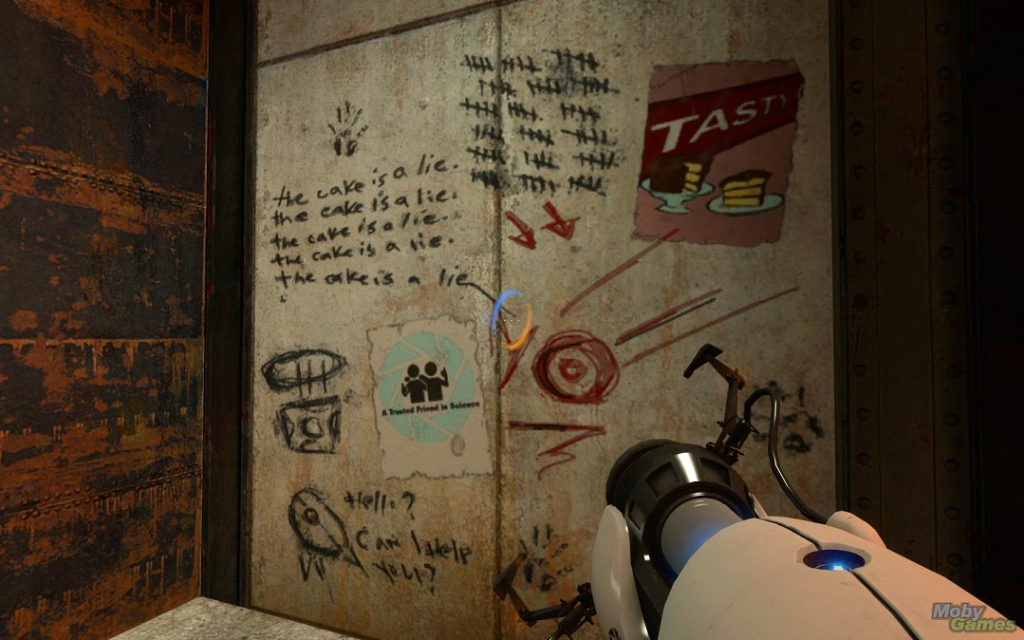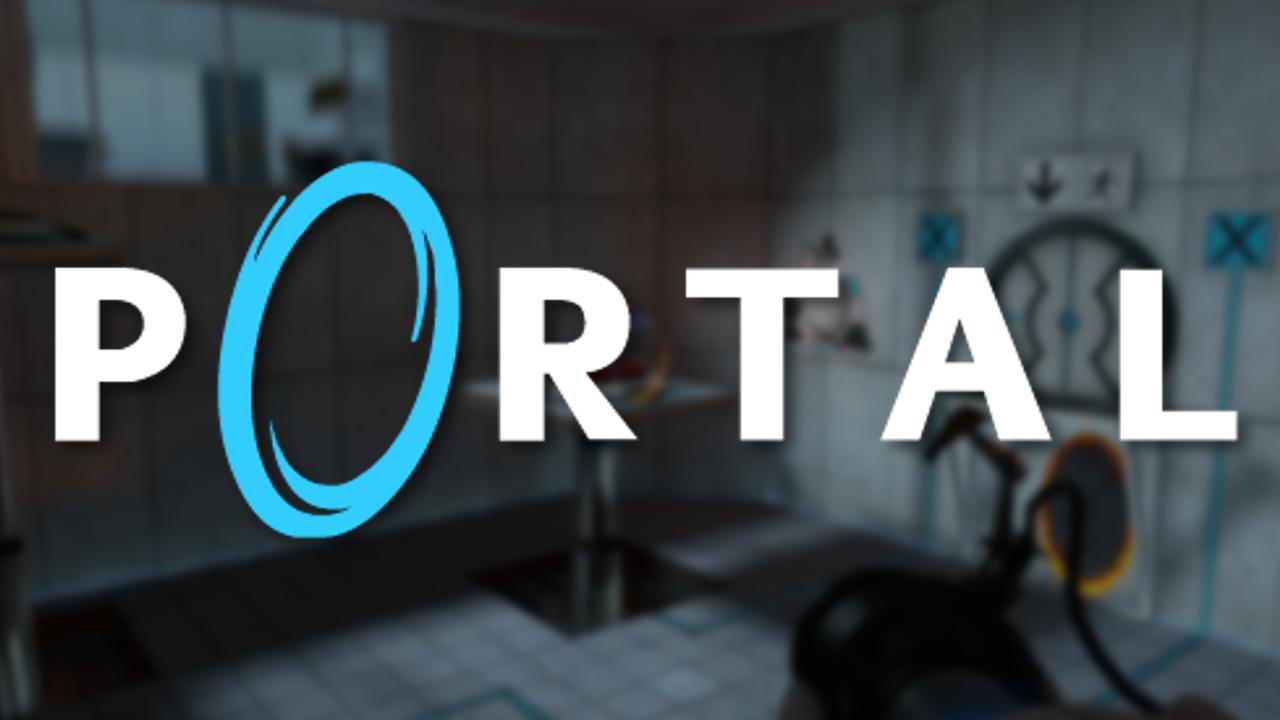
This article originally ran under a different banner/website in June of 2020 and is now being here re-uploaded for purposes of convenience and consolidation. Please enjoy.
HEAR YE!!! HEAR YE!!! While many are expecting a The Last of Us Part II review, I must dreadfully inform you I am still working on gathering all my thoughts and opinions on that divisive title. With that in mind, I wanted to play something on the opposite end of the spectrum. Something a little more cheerful or at least with minimal killing. While the number of games I haven’t played continues to mount against me, I felt a strong urge to play through Valve’s 2007 darling, Portal. Now, I can see many of you rolling your eyes. Surely, I, the Video Game Doomsayer, couldn’t contribute any more to the discussion in regards to Portal’s brilliance. While I am sure nothing I say will be earth-shattering or revolutionary, I do want to stand atop my soapbox and highlight Valve’s strength as developers. Consider this a plea from the dear old Doomsayer, for Valve to make titles similar in size and scope to Portal.

The older I get, the more I realize Valve is the master of subtle storytelling. Initially, the story of Portal doesn’t seem too impressive, with our silent hero, Chell, completing experiments at the request of an AI named Glados. However, subtle hints of off-putting lines from Glados and cryptic graffiti found outside the test chambers suggest a darker side to this AI. Once, we escape through the twisting hallways of the research facility, we learn that Aperature Science was desperate to compete with Black Mesa and created Glados to dangerous results. It becomes a deeper story when you realize Portal was supposed to be a snack-sized puzzle rather than a deep narrative experience.
Portal is a puzzle game revolving around the idea of using two interconnecting portals to solve specific test chambers. While the idea makes sense to those who have played Portal, I have often found trying to explain the concept confuses passing hobos who had not played the game. I think the best way to describe the idea is if you place one portal on the floor, the other on the ceiling, and walk through the portal on the floor, you will fall through the portal on a ceiling. Thankfully Valve eases players into the mechanic of Portal by only allowing players to place one portal while the initial test chambers have specific exit portals, showcasing Valve’s ability to educate players. With clearly defined rules, such as what surfaces you can and cannot place portals on, we see that Valve is the master teacher in this creatively designed classroom.

New mechanics are introduced at a comfortable pace including bouncing energy spheres, gates that destroy portals, turrets, and my personal favorite momentum. More specifically, as Glados says it, how portals do not affect forward momentum. If you jump into a portal from a high enough distance, you will come out of the other portal at the same speed. You can effectively use this mechanic to fling yourself across some gaps and chasms. My personal favorite puzzle has to be where you need to fling yourself between various platforms above water that gradually get taller. You’re constantly using gravity to fling yourself higher and you must carefully move the portals between platforms. You’re in constant motion during this puzzle resulting in an intoxicating rush as you soar around the test chamber.
Another highlight is the final confrontation with Glados herself. The fight showcases everything that makes Portal a standout title. Glados has gone from a patient voice to full-blown sarcastic homicidal AI, and her constant jabbering during this fight, cements her status as an iconic video game villain. The fight is also a final exam for your understanding of the inner workings of mechanics such as turrets and flinging. This fight wraps up a game that is a tightly focused two to three-hour experience.

Some best games will include filler material; sometimes it’s to give backstory or pad out gameplay. Portal has none of this and is arguably the most efficient game ever. Personally, this is what I would love to see Valve return to. Not a bloated fifty-hour game that most publishers think we desire, but a small compact, tightly focused game such as Portal. I don’t even believe it needs to be as expansive as Portal 2. If Valve found a mechanic that they would love to explore, give it the same classroom-like structure contained within Portal, and wrapped it all together with their classic storytelling methods, I would be a happy Doomsayer. A large task, I will admit, but one that I think the studio is more than capable of pulling off. All I ask is they don’t take a title like Portal and make it a virtual reality title. Not cause I don’t think Valve should make VR titles, but I can imagine flinging myself through portals to be nausea-inducing.
